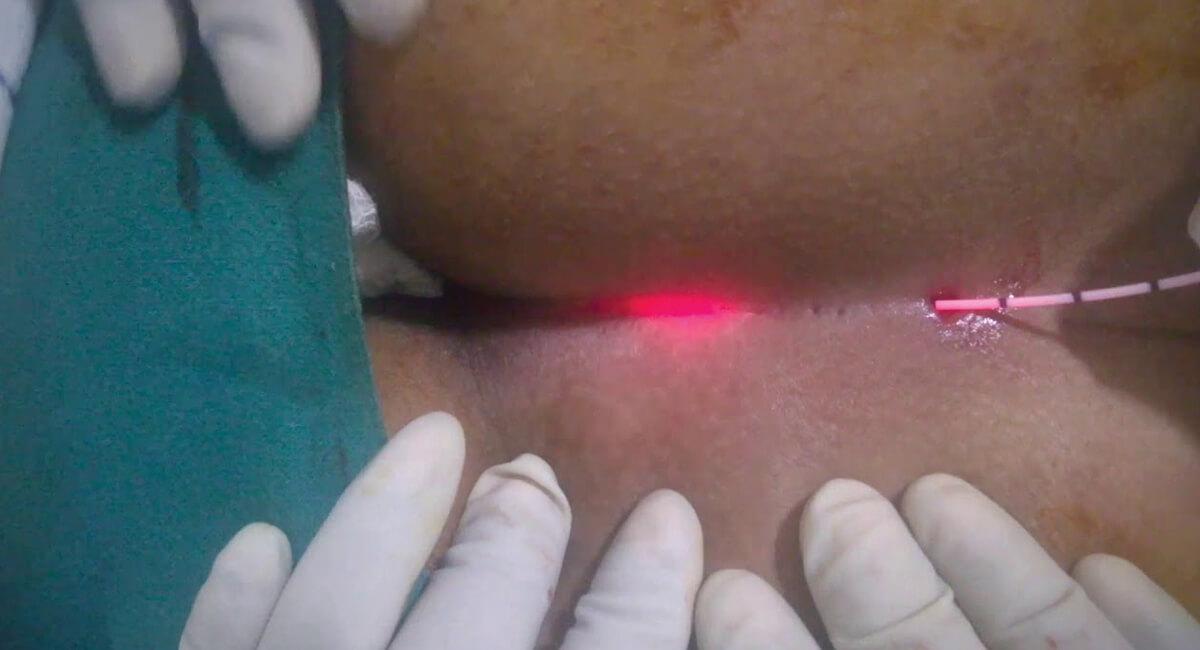
Introduction
A Pilonidal Sinus is a minute hole in the skin. It might fill up with pus or fluid, leading to the formation of an abscess or a cyst. It usually surfaces near the tailbone, on the split above the buttocks. The pilonidal sinus may comprise dirt, hair, and debris. It might cause extreme pain and is prone to infection. If it gets infected, it may discharge pus or blood.
A Pilonidal Sinus affects men more than women, especially young adults. It is also commonly found among people who sit continuously, such as desk workers, taxi and bus drivers, etc.
Request an Appointment at Smiles
What are the Causes of Pilonidal Sinus?
Activities like sitting cause friction, affecting hair growth in the area, and push such hair back under the skin. Your body now treats this hair as foreign objects and counters them with an immune response. This is similar to how your body would react to a splinter. The immune response from your body leads to the formation of a cyst around the hair. In some cases, a person may have more than one cyst connected below the skin.
The people most at risk to develop this disease are:
- ● Males
- ● People aged between 20-30 (most common among this group)
- ● Obese people
- ● People whose work requires long hours of sitting
- ● People with excessive body hair
- ● People with coarse hair
What are the Symptoms of Pilonidal Sinus?
The symptoms of infection are:
- ● A swollen cyst
- ● Red/sore skin around the infected area
- ● Sitting and/or standing causes pain
- ● A foul odour due to the pus or blood discharge
- ● Protruding hair
- ● Development of multiple sinus tracts
- ● In rare cases, a slight fever
How is Pilonidal Sinus Treated?
- ● Conservative treatment: If you get an early diagnosis and are not experiencing a lot of pain and inflammation, it can be treated by antibiotics. These antibiotics will mostly include broad-spectrum antibiotics, which, as the name suggests, can treat a broad range of bacteria. However, it should be noted that this medicine will not heal the sinus tract. It will only ease the discomfort and infection.
- ● Lancing: This process relieves the discomfort caused by an abscess (collection of pus). For this procedure, you will be given anesthesia. The doctor will then use a scalpel to cut open the abscess and clean any hair, pus, or blood from it. The wound is then dressed with a sterile dressing and left to heal from the inside out. It takes almost four weeks to heal. No further treatment is required.
- ● A phenol injection: Under this procedure, you will first receive anesthesia, followed by the phenol injection – a chemical antiseptic. This procedure might need to be carried out multiple times until the cyst hardens and closes. As it needs to be repeated, doctors prefer surgery over this procedure.
- ● Surgery: In case of multiple or recurring sinuses, the doctor will recommend you to go in for surgery. The surgical procedure begins with local anesthesia, and the doctor will then open the cyst/sinus to remove the abnormalities. After successfully removing the debris, the doctor will stitch up the wounds.
What is the Results of Pilonidal Sinus Treatment?
What are the Risk Associated with Pilonidal Sinus Treatments?
Following are a few ways to avoid a recurrence of a Pilonidal Sinus:
- ● Closely follow the doctor’s instructions during the recovery period.
- ● Make sure to follow up with the doctor regularly.
- ● Keep the area clean and maintain hygiene.
Request an Appointment at Smiles
FAQ's
How to Manage the Pain during the Recovery Period of Surgery?
- ● Taking pain medicines
- ● Avoiding sitting on hard surfaces
- ● Avoiding activities that cause a strain on the affected area
How Long does a Pilonidal Sinus Surgery take?
What should I do to Prevent a Pilonidal Sinus?
What are the Signs that Indicate that a Sinus is Infected?
- ● Swelling or inflamed skin
- ● Extreme pain
- ● A mild to high fever
- ● Oozing blood or pus from the sinus
- ● A foul smell from the wound
Post-surgery, how soon can I Resume Regular Activities?
Need Help?
For any Information about our Locations, Doctors or Treatments.
